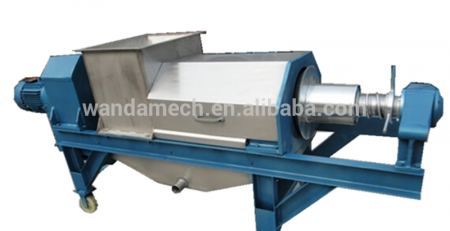Filter Press: A Comprehensive Guide to Separation Technology
A filter press is an indispensable tool used in separation processes, specifically to isolate solids from liquids. This machine comprises multiple filter elements and offers convenient access to remove the filtered solids, allowing easy cleaning or replacement of the filter media.
Filter presses excel in achieving high performance, especially when aiming for low residual liquid in the solids. They find extensive use in various industries, including marble factories where they separate water from mud, enabling water reuse during the marble cutting process.
Concept behind Filter Press Technology
The slurry to be separated is injected into the press’s center, filling each chamber successively. Optimal filling time ensures uniform loading of chambers before the mud in the initial chamber solidifies. Pressure builds up as the chambers fill, creating thick sludge. Pressurized air or water is then used to force the liquid through filter cloths to separate it from the sludge.
Historical Evolution
The initial form of the filter press was invented in the UK in 1853 to extract seed oil using pressure cells. Subsequent technological advancements began in the mid-20th century, with Japan introducing the world’s first automatic horizontal-type filter press in 1958. These innovations led to enhanced efficiency, moisture reduction, and expanded industrial applications.
Types of Filter Presses
- Plate and Frame Filter Press: A fundamental design comprising alternating plates and frames with filter membranes, allowing the filtrate to flow through narrow slots into a collection system. These presses require disassembly for filter cake removal.
- Fully Automatic Filter Press: Similar to manual plate and frame filters but fully automated, equipped with larger plates and mechanical shifters, ensuring uninterrupted operation.
- Recessed Plate Filter Press: Lacks frames, utilizing recesses in each plate for filter cloths, allowing easy cake removal with minimal effort.
- Membrane Filter Press: Incorporates inflatable membranes in filter plates to compress residual liquid from the filter cake before opening plates, achieving remarkably low moisture content in the solids.
Applications
Filter presses serve diverse applications, from mineral mining slurry dewatering to blood plasma purification. They excel in ultrafine coal dewatering, filtrate recovery in coal preparation plants, and other industrial uses like municipal waste sludge dewatering, ready mix concrete water recovery, metal concentrate recovery, and large-scale fly ash pond dewatering.
Assessing Crucial Characteristics
Various calculations aid in filter press operations in wastewater treatment, determining parameters like solids loading rate, net filter yield, and filtrate flow rate through cloth and cake. These calculations help optimize filtration processes and efficiency.
Design Considerations
Filter press selection depends on liquid or solid phase value. Materials, filter mediums, operating conditions, pre-treatment methods, and waste disposal considerations significantly impact the press’s performance and efficiency.
Advantages and Disadvantages
Compared to competing methods, filter presses offer advantages like providing large filter areas in compact spaces. However, issues persist with efficiency improvements and associated challenges, raising questions about their continued relevance compared to newer filtration technologies.
Future Developments
Future market demands emphasize finer separation, material recycling, energy efficiency, and green technology. Super-high pressure filters and alternative techniques using steam for cake dewatering represent potential avenues for enhancing filter press performance.
In conclusion, while filter presses have a rich history and widespread applications across industries, ongoing advancements and innovation will be pivotal in meeting evolving filtration needs and efficiency demands in the future.

 中文
中文 Русский
Русский


